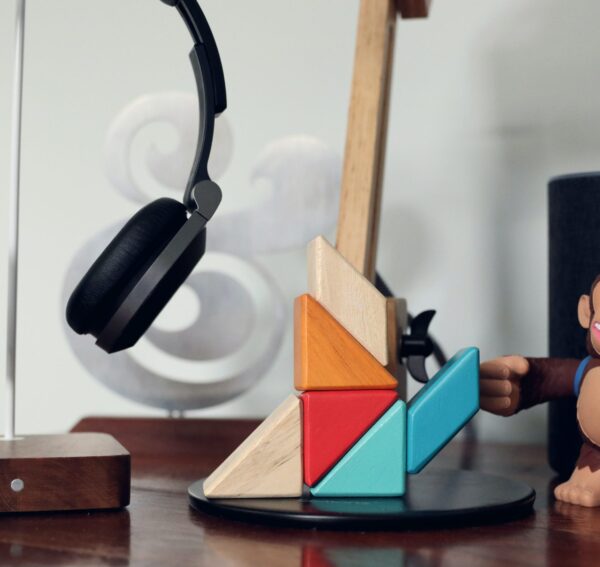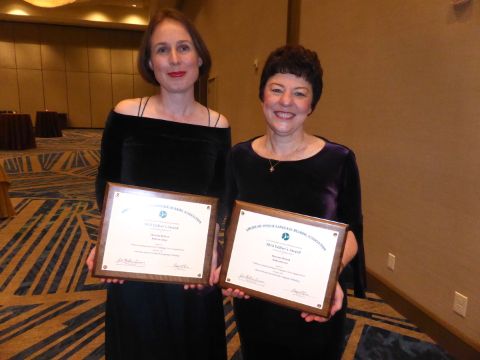Environment isn’t everything – speech pathologist shares her tips ahead of awareness week

Dr Sarah Verdon, Head of Discipline and Senior Lecturer in Speech and Language Pathology at Charles Sturt University, has shared her tips on how educators and families can track children’s communication, to ensure their development is on track, and how language development can be fostered at home and in early learning settings.
Dr Verdon’s tips have been shared as part of Speech Pathology Week 2021 held from Sunday 22 to Saturday 28 August.
In 2015, the Australian Bureau of Statistics (ABS) estimated that 1.2 million Australians had some level of communication disability, ranging from mild to severe. Communication difficulties can impact the entire course of a person’s life.
Typically, Dr Verdon said, parents and educators have two main concerns when it comes to identifying communication disabilities, disorders or delays in children, namely;
- What is typical communication development?
- How do you tell the difference if it’s typical or if it’s actually a communication disorder?
“When it comes to understanding typical development, I think one of the biggest myths is that children just automatically acquire their language, as if by osmosis, but that’s not true,” she explained.
“We know if we left a child alone in a room and never spoke to them for the first six years of their life, then they would never develop language because language comes from your environment.”
Environmental circumstances are important in children’s language development – to support children to have good, strong, rich language, they need a good, strong, rich language environment, (because they’re only going to learn the words that they hear.)
“This is why parents and educators play such a huge role in children’s language development,” Dr Verdon emphasised.
“Talking with children every day from birth is the best way to set them up to be successful communicators.”
Environment, however, is not the only determinant of communication success. Sometimes, despite a supportive environment, children will have a communication disorder. This isn’t a result of any fault by their parents or educators, but rather it is a common occurrence in childhood.
International research suggests that around seven per cent of children, or two children in every average classroom, will have a communication disorder. When this happens, the most important thing for the child is early identification and early intervention.
“This is where parents and educators play an essential role as ‘first responders’,” Dr Verdon explained. “The sooner the key adults in a child’s life detect a communication difficulty and refer to speech pathology services, the better the outcomes for the child in the long term.”
To check children’s communication development, Speech Pathology Australia has a communication milestones for development checklist, designed to show educators and families about what typical communication development looks like in early childhood for 12 months, 18 months, two years, three years, four years and five years.
While the guidelines are useful, it is important to note that they aren’t developed for multilingual children and they don’t necessarily take in different cultural considerations.
Children with communication difficulties
If there is a communication difficulty, Dr Verdon said, typically children will be in one of two camps:
- One is that they’re just a late talker or perhaps they haven’t had great exposure to language and they’ll catch up later, if they’re given good support.
- The other is that they have a communication disorder that requires speech pathology intervention.
At a really young age, it can be difficult to tell which camp a child belongs to. In this instance, the doctor recommends consulting a speech pathologist and having the child assessed, “because you’ve got absolutely nothing to lose.”
“We know from the research that early intervention is key. The earlier you start supporting a child and intervening with them, the better chance they have at enhanced long-term communication outcomes,” she added.
Tips and strategies
When it comes to boosting children’s communication, she uses the acronym SPRING:
S is for ‘sing’
“Song is a fun and engaging way of remembering concepts. If you’re learning about concepts, such as the song ‘Head, Shoulders, Knees, And Toes’, your child is learning their body parts in a jingle that’s going to stay with them. It can be much easier than trying to learn individual vocabulary words, by putting them into a song.”
P is for ‘play’
“Play is children’s core business. That’s how they figure out what’s going on in the world and they explore their environment. It’s a fun way for them to learn words, by telling them the words of the things that they’re playing with. It’s also a great way for them to learn social interaction, sharing and turn-taking.”
R is for ‘read’
Children, Dr Verdon said, should be read to daily from birth.
“Sometimes we think children aren’t into books until they’re two or three, but they certainly are. It teaches kids lots of vocabulary that they wouldn’t normally see. It’s not very likely you’re going to see a giraffe or a zebra out the front of your house, but you’ll see it in a book. That’s how you learn vocabulary that’s not familiar in your environment. Shared book reading ingrains that love of reading with children from a young age as well as a special connection with their significant others.”
I is for ‘interact’
“Interaction is all about connection. The things that children crave most of all are not toys or lollies, it’s interaction and connection with their loved ones. A great analogy that we use is the ‘serve and return’. Every time a child serves a communication attempt at you, you should return it, whether it’s a gesture or a sound. It could be a baby even babbling at nine weeks of age. You say, “Oh baby, you’re babbling. Oh, you’re such a beautiful talker”. That’s that ‘serve and return’ of constantly interacting with your child, letting them know that you hear them, that their communication has an impact on your life, and that you’re there to return that serve. This builds more than just their communication but also their sense of attachment and emotional security as well.”
N is for ‘name and narrate’
“This is where talking to yourself comes in handy! The more you talk to yourself, the more children hear words in their environment. So, if you’re cooking dinner, say Mummy (or Daddy) is opening the pasta, Mummy is getting the pot out, Mummy is stirring with the spoon. The child is learning all these vocabulary words, but you don’t have to do anything extra because you were already cooking the pasta in the pot. You just have to talk about it and the children learn the vocabulary.”
G is ‘going where the child leads’
“Following what the child is already interested in makes connecting with them so much easier because then you don’t have to convince them to try and learn language. You just follow them. If they’re interested in a truck, sit and play with the truck. If they’re interested in a TV show, talk to them about what’s on the TV. If they’re interested in the bug on the ground, then go with that. There’s so much opportunity to teach language using whatever the child is already doing. You don’t have to think up any fun and interesting activities because kids are already fun!”
For more tips, ideas and discussions about children’s communication development The Talking Children Podcast is available on Spotify, Apple and all other podcast services. It is specifically targeted at parents and educators to distil relevant research information into 10- to15-minute segments that make sense for families.
Popular

Policy
Practice
Provider
Research
Workforce
Reforms risk failing as new data reveals $2.4b child-safety gap
2026-01-19 07:15:41
by Contributed Content

Practice
Quality
Research
Workforce
The hidden workload: Why educators shouldn’t be responsible for cleaning
2026-01-19 07:45:10
by Contributed Content

Practice
Provider
Quality
Workforce
Student placements are not a staffing strategy: The missing piece from our workforce conversation
2026-01-20 08:00:17
by Contributed Content













